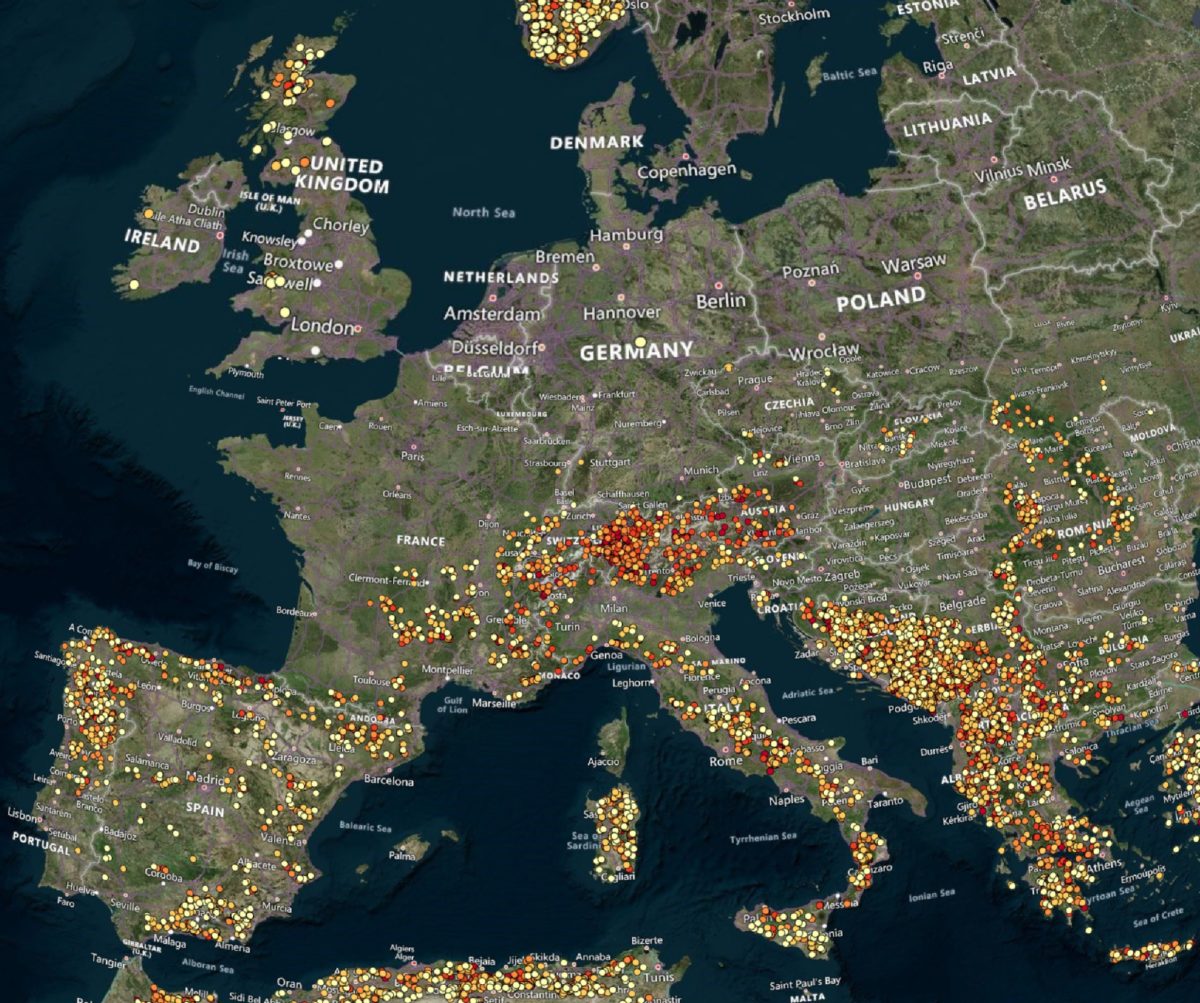From pv magazine Global
Large-scale storage is required for energy systems based upon variable solar and wind. But there is already a highly credible, off-the-shelf, low-cost energy storage technology that is unconstrained by material availability, that has been available for a century. It has already been deployed at a scale of 200 GW, and is available at unlimited scale nearly everywhere. This technology is pumped hydro energy storage (PHES).
But there is a twist. Nearly all of the good PHES sites are located away from rivers, for the simple reason that most of the global landscape is not near rivers. The Australian National University’s Global Pumped Hydro Atlas lists 616,000 sites with a combined storage capacity of 23 million GWh, which is about 100 times more than is needed to support a global 100% renewable energy system.
PHES can be readily scaled to any required storage capacity at a known and affordable cost. Future technological development could further reduce the cost of electrochemical electricity storage such as Li-ion batteries. However, existing PHES technology sets a robust upper limit on the cost of storage that is already affordable and highly available in almost every country.
Companies and governments can confidently proceed with terawatt-scale deployment of low-cost, variable solar and wind in the knowledge that at least one highly credible, scalable and affordable energy storage technology already exists. No arm-waving is required about future cost reductions, and there are minimal resource constraints.
Off-river PHES involves pumping water uphill from one reservoir to another at a higher elevation for storage. When power is needed, water is released to flow downhill through turbines, generating electricity on its way to the lower reservoir.
For example, a pair of 100-hectare reservoirs – at an average depth of 20 meters, spaced a few kilometers apart and connected with a tunnel, with an altitude difference of 600 meters – can store 24 GWh of energy. This means the system could supply 1 GW of power for 24 hours.
The reservoirs can be constructed in hilly country, away from any river. Alternatively, existing lakes or reservoirs can be used. Because most sites are away from rivers, there is no need for flood control or new dams. The annual operating cost is low, and the system lifetime is 50 to 100 years. The working fluid is water, rather than electro chemicals.
Hour-by-hour analysis over many years of several countries suggest that about 2 GW of storage for one day (50 GWh of storage energy) per million people is enough to support a 100% renewable energy system in an affluent country, depending on local factors.
The land requirement is very small: in the range of 4 square meters per person. The water requirement is also small, at about 4 litres per day per person for the initial fill. To replace evaporation, the water is cycled up and down hill for 100 years.
In comparison, about 30 square meters of solar panels per person are required to provide each individual with 10 MWh of electricity per year, which is typical of annual electricity requirements in affluent countries.
The Global PHES Atlas lists 616,000 sites that can be panned and zoomed to a resolution of 30 meters. Sites in National Parks are excluded from the atlas. Tunnel routes, dam walls, flooded land, and cost classes (A to E) are shown for each site. Clicking on a site produces pop-ups listing 16 different attributes, including location, head, tunnel length, and volumes of the impounded water.
The United States has 35,000 good sites with 1.4 million GWh combined storage, mostly in the Rockies, but with a good number in the east as well. The enormous solar and wind potential of Texas can be coupled with local PHES storage to supply solar electricity to the east and west coasts in the middle of the night.
While northern Europe has relatively few sites, there are many good sites in the south. Strong north-south grid interconnections allow wind energy from the north to be exchanged for southern solar energy and PHES storage.
By Professor Andrew Blakers (ANU) and Professor Ricardo Rüther (UFSC)
Andrew.blakers@anu.edu.au and rruther@gmail.com
ISES, the International Solar Energy Society is a UN-accredited membership NGO. It was established in 1954.
The views and opinions expressed in this article are the author’s own, and do not necessarily reflect those held by pv magazine.
This content is protected by copyright and may not be reused. If you want to cooperate with us and would like to reuse some of our content, please contact: editors@pv-magazine.com.








By submitting this form you agree to pv magazine using your data for the purposes of publishing your comment.
Your personal data will only be disclosed or otherwise transmitted to third parties for the purposes of spam filtering or if this is necessary for technical maintenance of the website. Any other transfer to third parties will not take place unless this is justified on the basis of applicable data protection regulations or if pv magazine is legally obliged to do so.
You may revoke this consent at any time with effect for the future, in which case your personal data will be deleted immediately. Otherwise, your data will be deleted if pv magazine has processed your request or the purpose of data storage is fulfilled.
Further information on data privacy can be found in our Data Protection Policy.